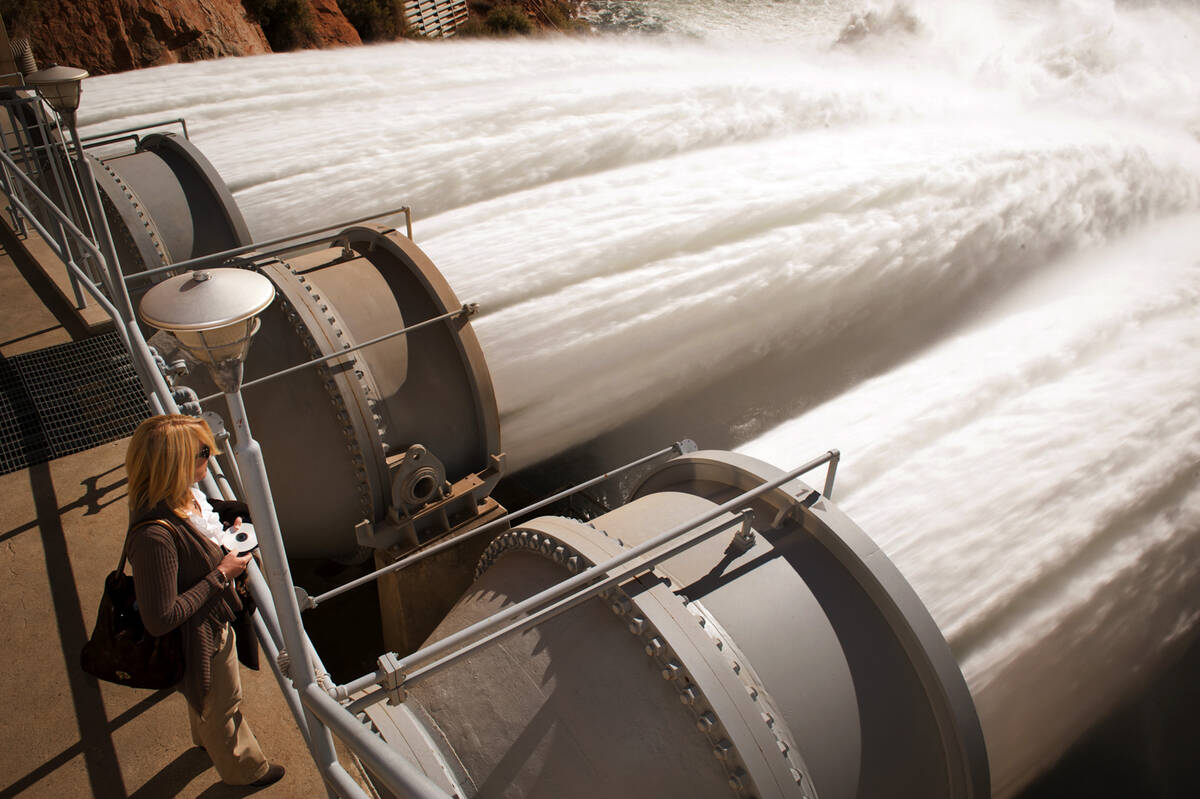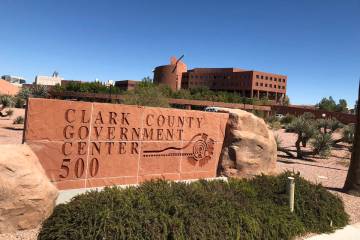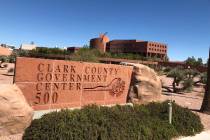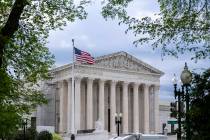‘Dangerous precedent’: Feds say no to controlled flood on Colorado River
A controlled flood that replenishes beaches within the Grand Canyon won’t happen this year as officials grapple with the effects of a two-decade drought on the Colorado River.
It’s a decision that shows how a lack of water has forced the federal government to change operations on the river.
“This is a microcosm of a much larger issue and it exemplifies that less water means changing management practices, which will likely in the long run have detrimental effects on the environment and the overall public interest,” said Kyle Roerink, executive director of the Great Basin Water Network.
Eight times since 1996, the U.S. Bureau of Reclamation has released a dramatic rush of water from the Glen Canyon Dam to break up sand in the river below and redistribute it downstream.
The releases primarily benefit recreational users of Marble Canyon and Grand Canyon by repairing and expanding beaches.
But this year, despite favorable sediment conditions, the federal government decided to withhold the flow.
Unacceptable effects
Lee Traynham, a program manager for the bureau, said her agency used a process to determine whether unacceptable negative effects would come from a flood experiment.
“And in this case, this year, we determined that there would be,” she said.
Officials don’t even consider conducting releases until hundreds of thousands of tons of sediment, mostly from the Paria River, build up in the Colorado River in northern Arizona.
Now, more than a million tons of sediment accumulated in the river, Traynham said.
“Since we’ve been conducting (the controlled floods), this is perhaps the second-largest sediment contribution that we’ve seen,” she said.
But evaluating sediment buildup is only the first part of the process.
Whenever a release is considered, state and federal officials come together to evaluate the potential effects on other things, such as water quality, tribal concerns, a federally protected fish species, power production and the status of a fund made up by power-generation revenues.
This year, proponents of the flow release were concerned that persisting drought conditions would limit the ability to conduct an experiment in the future. They also argued that the sediment redistribution was needed because the last flood was conducted in 2018.
Joel Sankey, acting chief of the U.S. Geological Survey’s Grand Canyon Monitoring and Research Center, said downstream beaches erode over time.
This year, runoff from monsoonal rains has also cut through some beaches, damaging them, he said.
“Some of them are in particularly rough shape because of that,” Sankey said.
Protecting the buffer
But the majority of the team that considered whether to conduct a flood this year found the effects on other resources unacceptable.
A 60-hour flow, which would have begun Monday, would have reduced Lake Powell’s elevation by about 2 feet.
This decrease runs contrary to an action the Bureau of Reclamation took last summer to boost the lake’s elevation 3 feet by releasing water from upstream reservoirs, the bureau wrote in a letter announcing the decision not to conduct a flow experiment.
Water from the upstream reservoirs is supposed to help Lake Powell avoid dipping below an elevation of 3,525 feet. (Lake level is measured in elevation, not depth. An elevation of 3,525 feet means the water level is that high above sea level.)
An elevation of 3,525 feet provides a 35-foot buffer from the minimum water level that allows the Glen Canyon Dam to generate power.
Officials are also concerned with other potential effects of falling below that level, such as releasing warmer water, releasing water with low concentrations of oxygen, and the risk of non-native fish getting past the dam and into the river below, Traynham said.
Releasing a rush of water to break up sand could decrease support for future upstream releases into Lake Powell, which will likely be necessary, according to the bureau’s letter.
Water level projections show Lake Powell dropping below the target elevation temporarily next year.
“Any additional amount of time we spend below 3,525 is considered very risky,” Traynham said.
Conducting a flood would leave the reservoir below that elevation for as many as 15 additional days, according to the letter.
Power down, expenses up
The simulated floods do not affect the total volume of water that is released downstream in a year. To offset the lake level decline from the temporary rush of water, the dam would scale back its releases in later months.
But those scaled-back releases would put even more strain on power production, which is already suffering due to lower lake levels and a mandated decrease in downstream releases.
The Western Area Power Administration, a government agency that markets and transmits wholesale power, is already unable to keep up with demand.
“To make up for the shortfall, (the administration) needs to purchase energy on the wholesale market to meet these obligations,” said Peter Soeth, a spokesman for the administration.
Decreased power production means less money for a fund that pays for things like dam upkeep and environmental programs. The Bureau of Reclamation and Western Area Power Administration are already putting off maintenance and considering rate increases to offset the currently projected decline of the fund.
A controlled flood would force the administration to buy even more power to meet demand, costing the fund an estimated $1.3 million to about $3 million, according to the Bureau of Reclamation.
Decision faces criticism
This isn’t the first time the Bureau of Reclamation decided against conducting a flood after the river hit its sediment buildup trigger.
In 2015, bureau officials called off the flood because they were trying to stop the spread of a non-native fish, according to Jack Schmidt, director of the Center for Colorado River Studies at Utah State University.
The existing framework for implementing the controlled flood is supposed to put the decision-making process in the hands of science and environmental management, not politics, he said.
“This is the first time that a flood has been canceled because of politics and revenue and economics and it’s a dangerous precedent,” he said. “This is exactly what was not supposed to happen.”
He said the cost estimates of holding a flood this year are consistent with estimates of past years when floods have been conducted, but the bureau said this year’s costs are appearing in a different context.
The Bureau of Reclamation says officials use the best available science and consider the status of all resources before issuing a decision on whether to conduct a flood.
Schmidt, a member of the original team that called for controlled floods in the 1990s, hopes the Bureau of Reclamation conducts a release in the spring, something the bureau says it will consider.
John Weisheit, a Colorado River guide and longtime advocate, said there’s no reason not to conduct the flow release this fall. He said the releases don’t mean hydropower production will cease.
“Here’s what it means,” he said. “Grand Canyon is not important. Our bottom line budget is more important than the Grand Canyon.”
Contact Blake Apgar at bapgar@reviewjournal.com or 702-387-5298. Follow @blakeapgar on Twitter.






























